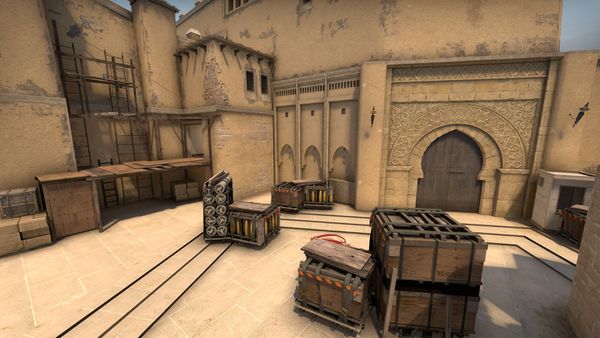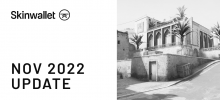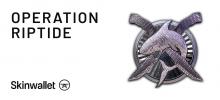Everything you need to know about CS:GO Mirage map in 2020

It’s almost as sure as taxes that if you already played CSGO online a couple of times, you must have landed on Mirage at least once. For years, this sandy demolition arena has been one of the most popular maps in both the casual online play and during tournament matches of pro competitions.
It’s also a very consistent position in the map roster, as it hasn’t been reconstructed in terms of gameplay since its inclusion in CSGO in 2013, and the changes made from its predecessor are also very minor in terms of layout and gameplay.
In an unsuspected turn of events, Mirage started being more and more acknowledged during pro play in face of excluding Dust 2 from the tournament plays in 2017 and leading pro teams’ choices of maps. It also turned out that its simplicity makes it prone to finding new, game-changing tactics and thus became a sort of a proving ground for teams’ brained strategy. Take a moment to learn a bit about the map itself with our brief article.
Main locations on CSGO Mirage
Mirage is a relatively simple map that for years has been considered to be more CT-friendly, allowing for an extended AWP play that kept T’s at bay all the time. However, with ongoing research, it has proven to be very elastic when it comes to grenade play and developing consistent grenade usage allowed the advantage to be turned strongly to T’s side by executing decent throw tactics.
The map is quite evenly divided between spawn points and bombsites. Terrorists begin in a back alley that connects very directly by an arcade and a building balcony to bombsite A on a small plaza. On the other side, it leads either to the midway passage (called just “mid”) that shoots of with shortcuts to both bomb sites, or terrorists can climb to the apartment complex and swarm bombsite B from above. Counter-Terrorists begin next to a city gate and can choose from three main pathways – either by the ramp straight to bombsite A, by the window shaft to a sniper’s nest overviewing mid, or through the market to the bombsite B. Because of the connector (an archway between mid and bombsite A), the catwalk leading to short B (a quick route between mid ramp and bombsite B) and the underpass (sometimes called “rat”, a staircase to an underground passage connecting the foot of sniper’s nest to the apartments near bombsite B) both teams can quickly maneuver between all three main lanes of the map.
As mentioned before, this layout calls for the simplest storming strategies at first glance. However, the variety of props and the slight verticality difference between all bombsites allow for many iterations of the same, similar approach. When it comes to bombsites, CTs arrive just very shortly before Ts, so it just allows getting better positioning but makes it harder to push for CTs. On the other hand, at first, mid was considered to be strongly in favor of CTs because of the sniper’s nest. However, on CSGO Mirage smokes properly cast on mid can totally obscure the view and allow Ts for a quick, strong siege on bombsite B through short B.
What are the main CSGO Mirage callouts
Aside from those mentioned above, here are more specific CSGO Mirage callouts:
- Palace is the upper route from T-spawn to bombsite A. It also has the subdivision of pillars, meaning the lower part of the palace before exiting to the wooden construction.
- Shadows is a lurking place beneath the wooden construction. Some people will call the whole thing “wood”.
- A ramp is the lower way from T-spawn to bombsite A.
- T-roof is a ledge next to their spawn that allows to watch A ramp in case of a hard CT push.
- Triple box is the stack of boxes in the middle of bombsite A.
- Tetris means a block construction just in front of A ramp.
- Sandwich is a stone staircase just next to tetris.
- Jungle is a darkened passage between CT spawn, sniper’s nest, and bombsite A.
- Ladder room provides a connection between sniper’s net and the underpassage’s exit in back alley via a vent.
- House is the first apartment entered from T-spawn and allows to enter back alley.
- Side alley leads from T-spawn to mid.
- Mid boxes are T’s cover from sniper’s net in mid.
- Chair is a corner that allows an overview of short B.
- Back alley is a small area connecting house, underpass, and apartments.
- Kitchen is a camping spot in the apartments.
- Van stands at the foot of apartments’ exit.
- Arches provide a little cover for those entering bombsite B from short B.
- Market is the passage between CT spawn and bombsite B.
Of course, there are many some-more detailed callouts that could appear in the audio stream, but don’t worry – they usually reference specific objects and once you play your share of matches on it, you will intuitively know what they mean. At first, get to know the main ones, because they will be used in first order to signal the whereabouts of the enemy team. When the battle is engaged, then the specific ones will be used to pinpoint your enemies.
You can find a detailed map of CSGO Mirage callouts on this picture provided by the Total CSGO portal.

CSGO Mirage tactics
The amount of approaches one can have to skirmishing on CSGO Mirage is gigantic. Basically, the main thing is to decide which of the three main routes will be used and which bombsite will be heavily attacked or protected. It’s very often that both teams meet strongly on mid and then retrace their path depending on the intensity of clash. On causal servers, teams very often just rush one of the bombsites – typically, bombsite A – because it means that the battle begins very quickly. However, a swift ganker can use that occasion to cherry-pick kills from a different angle or to circumnavigate the enemy team and start killing from behind.
With competitive play, because the map allows a clash to happen so quickly, extra caution is advised and approaching the meeting point needs to be very intentional. For example, Ts will often deceive by causing a commotion in A ramp only to have some part of the team pop from the palace’s balcony or the other way around. If the CTs are too focused on the A, they might get ganked from the connector. On the other hand, CTs can easily maneuver to the back alley and break a clumsy attack on bombsite B.
Here you can watch a short movie from NadeKing presenting very detailed CSGO Mirage strats for grenade play that allows an efficient attack.
CSGO Mirage Trivia
CSGO Mirage was based on a very late, yet very welcome fan-made map for CS 1.6. De_cpl_strike was designed by Michael Hull in 2010 as an idea for a competitive, balanced map which could be a good alternative to the grinded map roster. The paths of the map remained almost the same in Mirage map CSGO version, however, what is now the apartment used to be another underground passage forcing Ts out of a single floor exit on bombsite B.
Current Mirage version includes a memorial graffiti on the wall next to the van at bombsite B. It commemorates an incredible 4 kills streak performed with an AWP by the player coldzera during his play for Team Liquid against Luminosity at MLG Columbus 2016.
Summary
Some people call CSGO Mirage ‘the new Dust 2” due to its popularity and the amount of attention to the detailed strategy it gets from competitive players. For now, it’s still unsure if it will be included in 2020 tournaments. Nevertheless, it is a great map to polish your skill on, especially when it comes to throwing grenades and blitz tactics. Let us know if you have any special maneuver you like to perform on CSGO Mirage!










